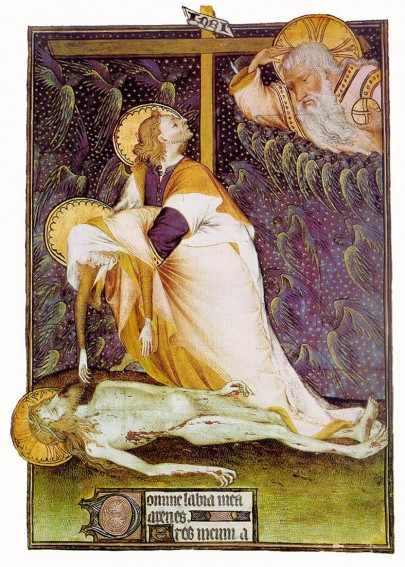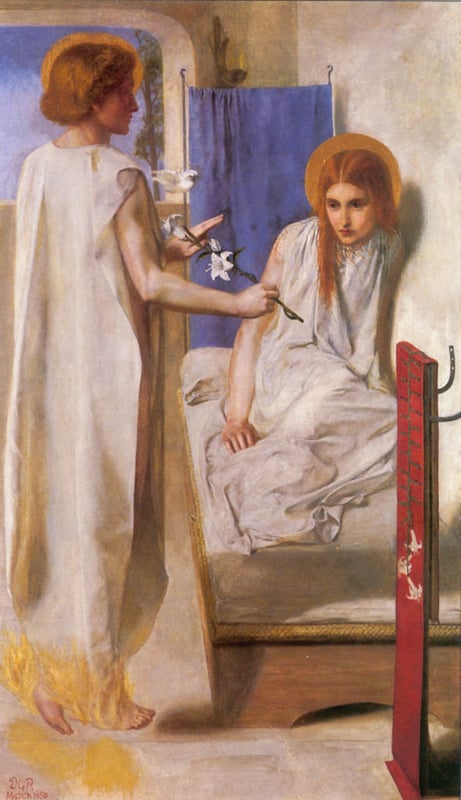 The long and winding road from Palm Sunday to Easter passes familiar landmarks: the loud crowd at the City Gate; gathering shadows in Jerusalem and the disciples in the Upper Room; the Last Supper’s bread and wine.
The long and winding road from Palm Sunday to Easter passes familiar landmarks: the loud crowd at the City Gate; gathering shadows in Jerusalem and the disciples in the Upper Room; the Last Supper’s bread and wine.
The road winds on: an agony of prayer in the Garden and the sleepy disciples; Judas’ kiss and the soldiers’ arrest; the trial by night and Caiaphas’ calumny.
Herod’s mockery; Pilate’s cruelty; the soldiers’ brutality. The cock crowing; Peter’s denials; the wailing women of Jerusalem; two Marys weeping at the cross.
A thief beside him, begging for resurrection; death and thunder, and then silence; silence and taking the body down; silence and more silence.
This is a heart-breakingly lonely story. And in it, Jesus is never alone.
The story assures us, heart-break is essential for resurrection. A trail of tears – our tears – is the way to Easter.
In this story all hearts get broken. Herod’s heart, twisted to evil as he places the crown of thorns. Pilate’s heart, shamed as he sighs and washes his hands and remains unclean. The soldier’s heart as he cries out, Certainly this man was innocent. Even Jesus’ heart, when he prays My God, My God, why have you forsaken me?
Tears and sorrow are necessary for the journey to Easter. Grief, not faith, will get us there.
Grief, tears, and sorrow are rooted in the heart’s abiding love. They are not rooted in belief, nor in public commitment, nor in submission. In fact, they live in the opposite of submission – grief and tears are the heart’s resistance to the dominant forces at hand.
In our staged preparations for Easter all the details become occasions for lament. And lamentation, as the prophet Jeremiah knew, keeps hope alive.
Here’s confirmation: consider the instances in which Jesus raised the dead, and consider the essential tears shed by those who loved them without end. Lazarus; Jairus’ daughter; the motionless, speechless paralytic; the daughter of the foreign-born Syrophoenician woman.
In each of these tales, Jesus responds to the grief of someone who loved them. grief for the one who has died, is dying, is paralyzed. Jesus grieves for the tears that howl from that mourner, and from their grief-born connection Jesus generates the force for resurrection.
For Lazarus, it is his sisters, Martha and Mary, but especially Mary, whose tears speak to Jesus’ heart. She weeps, and then he weeps. Without Mary’s tears Jesus might not have wept, might not then have found in them the power to raise Lazarus.
Jairus, a rabbi, broke ranks with the rest of the rabbis, coming to Jesus in his desperation for his little daughter. He admits this in public, humiliated, stripped of his dignity, not giving a damn for any of it, just begging Jesus to save his little girl. Jesus responds to the broken heart in Jairus, and heals the child.
Four friends carry a paralytic to Jesus’ home, cannot get through the crowd, instead climb up on the roof, carrying their friend, and cut a hole to lower the man down, begging Jesus to heal him. Responding to all that they have done for this, their friend, their testament of devotion to him, Jesus heals him. The Syrophoenician woman begs him for her daughter’s life; Jesus resists, saying he is only here for Jews, and for the love of her daughter she accepts this insult, saying even the dogs get to eat from their master’s table, can she not ask for their crumbs – and Jesus, moved by the depth of her devotion heals her daughter and honors her.
The spotlight centers on Jesus. Yet he does none of his miraculous deeds alone. It is in the strong connection of hearts that all is accomplished. So we are not spectators, watching Jesus rise and raise others. We participate. The love that knows no end is shown in our sorrow, expressed in our tears.
We cannot fake tears. They do not reside in a safe place. They cannot be stored in our recitation of creeds, ritual prayers, good deeds.
Our tears belong to those in whom we see a reflection of our true selves. Our tears join us to those who love us, for whom we will defy death.
The kingdom of love, God’s precious new world, calls for many dimensions of love: courage, risk-taking, imagination, fearlessness. In the passion of Holy Week we learn that the kingdom also requires our tears.
The weeping disciples regather in the Upper Room, and cry and sob and wail all that dreadful Friday, and all the next day as well. On the third day, Jesus rises to their tears, bringing to their ocean of grief his sunburst of joy, bringing to them his life again, in the goodness of God and for the good of the world. It is the sorrows that live in the heart that hold the life of the world.
The eastering of our souls occurs when we have the courage to lift from our torn hearts the life that we will not let die, the life we water with our tears, the life in which we place our hope.
In a murderous time, the heart breaks and breaks, and lives by breaking. – Stanley Kunitz
__________________________________________________________________
Image: John and Mary in- Lamentation after the Crucifixion. from Les Grandes Heures de Rohan. The Rohan Master, 1430-35. Bibliotheque National de Paris. Vanderbilt Divinity School Library, Art in the Christian Tradition.










